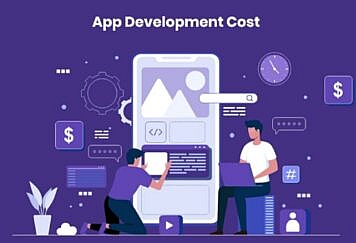It’s tempting to think of data governance as something that you can set up once and then forget about. But this is a mistake. A good data governance program requires regular maintenance, especially in the early stages when it’s essential to focus on building sustainable practices. In this post, we’ll explore five ways to ensure that your data program thrives over time.
1. Develop a well-defined strategy for your Customer Data Platform (CDP)
When it comes to data governance, you should think of yourself as the author of your novel. You want to ensure that each chapter is well-structured, with a beginning, middle, and end. Similarly, you want to ensure that your organization’s CDP strategy has a clear beginning (“What is our goal?”), middle (“How will we achieve this goal?”) and end (“What does success look like?”).
The first step in achieving this is defining what problem you are trying to solve. Is there an issue with access control? Do users need better visibility into their data? Once you have defined what problem needs solving at an organizational level, then look at how your CDP can be used as part of this solution.
If you’re looking for a CDP, there are multiple options, but Segment and Rudderstack are two popular ones. (See this detailed guide on Segment vs. Rudderstack for more information: https://www.rudderstack.com/rudderstack-vs-segment/).
2. Identify and implement the right data governance processes from the start
Integrating data science into your business is challenging. It’s even harder when you don’t have the right processes in place. When it comes to data, a lack of governance can lead to severe issues like data duplication or inconsistent reporting.
In the first step of building a successful data governance strategy, you’ll want to identify and implement the right data governance processes from the start. There are a few different processes that fall under this umbrella:
- Data stewardship is responsible for developing, maintaining, and implementing policies around your organization’s information collection practices
- Data security focuses on protecting your company’s personal information from unauthorized access or use, theft or loss
- Data quality ensures that your customer’s personal information is complete, accurate, and up-to-date by verifying its validity at every stage of collection and storage
3. Focus on building sustainable data governance practices
As you begin to build your data governance strategy, it’s essential to focus on sustainable practices. Data governance is not a one-time event. It’s a continuous process that requires ongoing attention and maintenance. It takes time for everyone in an organization to adopt new behaviors and habits around data governance—and even then, there will likely be people who continue to resist change.
Building sustainable data governance practices starts with understanding what drives the behavior of different groups in your organization. Here’s why:
- Data owners are those who are responsible for the accuracy and integrity of their data; they must understand the impact of their decisions on other groups and departments within your company.
- Data stewards understand how their work affects other departments or teams outside of their area; they can think about issues holistically as they relate across business units or functions (in other words, they can see how one part affects another). They also know how much access each person needs based on their role within the business unit—and when someone doesn’t need access at all times (like during off hours).
- Auditors monitor usage patterns across multiple teams/departments to spot anomalies caused by unauthorized access requests (such as someone downloading large amounts of sensitive information onto their personal computer).
4. Audit your data program periodically to identify any cracks in your data governance and decide on further investments
Once you have a solid basis for your data governance strategy in place, it’s crucial to perform an audit periodically to identify any cracks. This is where you’ll assess the effectiveness of your current approach and decide on further investments.
The first step is to define the problem before starting on a solution; otherwise, efforts will be misdirected or ineffective. For example, if your current goals are not specific enough (e.g., “improve customer retention”), they may not provide sufficient direction for successfully implementing new initiatives such as data quality improvements or lead nurturing programs.
Next comes setting goals: what do you want from this exercise? Setting ambitious but realistic expectations is essential so that any future success can be attributed directly back to this project rather than good luck or serendipity!
5. Leverage modern technologies and automation to lower manual work & build a scalable process
While data governance is a complex process, many ways to automate repetitive tasks exist. For example, AI can be used to automatically identify and resolve data quality issues in your organization’s databases.
One way to make your process more efficient is by using AI-powered tools that integrate into existing systems, like Google Sheets or Microsoft Excel. These tools allow you to manage and track company-wide information about customer data, such as its location and who has access to it. They also help improve the overall quality of your organization’s data by flagging errors before they become problems later on down the line (and then keeping track of those issues).
Conclusion
If you’re looking to build a customer data governance strategy, we hope these tips have been helpful. Big data is the future of business, so it’s essential for companies to be able to leverage the power of their customer data for growth and success. You’ll be well on your way by implementing these five tips into your own company’s processes!
Follow TechStrange for more!





